Power to the private sector
10 August 2021
President Ramaphosa’s decision to significantly raise the private power generation cap is set to be a “game changer” for the SA economy.
10 min read | 30 min video | 20 min podcast
Get Focus insights straight to your inbox
Chris Yelland of EE Business Intelligence who hosted the webinar with the British High Commission, summarises the best insights from the three-hour session in this 20-minute podcast.
Hydrogen has long been called the fuel of the future, thanks to its abundance and clean-burning nature (it emits only water vapour). However, problems around its transport, storage, explosiveness and production have inhibited its growth as an alternative to fossil fuels.
Despite this, the drive towards zero carbon emissions has led to increased investment in technologies that are making hydrogen power a much more attractive proposition. In fact, the global green hydrogen market size was valued at USD 3.2 billion in 2021 and it's predicted to expand by 39.5% from 2022 to 2030.
Chief among these is the advent of so-called green hydrogen – hydrogen that is produced without any carbon emissions. While hydrogen is abundant, it has to be extracted from other substances (mostly water). Traditionally, this process has been powered by fossil fuels, but this is rapidly changing as countries build up renewable energy power capacity at lower and lower costs per unit. Where renewable plants (such as wind or solar) produce more than the grid requires, the extra power can be used to manufacture so-called green hydrogen (see below for definitions).
It stands to reason therefore, that countries that are well-endowed with renewable sources of energy, such as South Africa, should be exploring ways to develop their own hydrogen economies. This was the key topic at a recent webinar, ‘Renewable hydrogen and green powerfuel opportunities for South Africa’, hosted by EE Business Intelligence and the British High Commission. Investec was a sponsor of the event, alongside the likes of the South African Department of Trade, Industry and Competition, the World Bank, Sasol, Toyota South Africa and Linde.
Ebrahim Patel, Minister of Trade, Industry and Competition, spelled out the policy efforts to promote a hydrogen economy in South Africa.
Patel said that the country had a rich endowment of renewable solar and wind resources, as well as the skillsets around Fischer–Tropsch technologies (a process used to produce liquid hydrocarbon fuels from syngas), and access to platinum group metals (PGMs) used in the electrolysers needed to produce green hydrogen as a fuel. This places the country at an advantage for developing the green hydrogen value chain and being a key supplier into the global hydrogen market.
“Our resource endowment has to be translated into a competitive advantage for value-added manufacturing that can contribute to job creation, investment, the export of hydrogen and value-added platinum-based fuel cells,” he said.
South Africa’s potential to become a key exporter of green hydrogen is outlined in a new report commissioned by German green energy think-tank, Agora Energiewende. The Super H2igh Road Scenario for South Africa report, compiled by global information consultancy IHS Markit, says green hydrogen in South Africa could cut the country's greenhouse gas emissions by 70% if we were to capitalise on opportunities presented by the hydrogen economy, due to our abundant renewable sources.
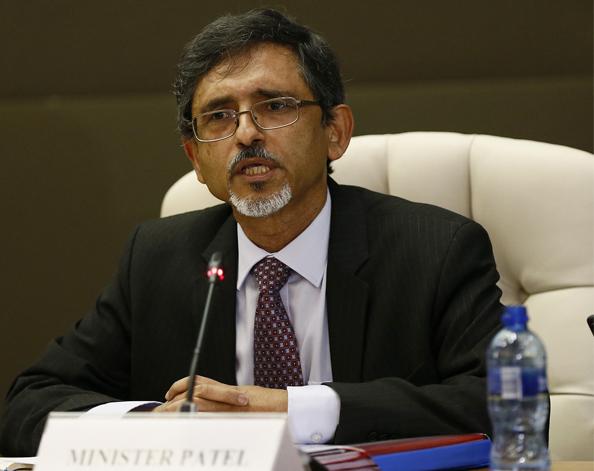
Our resource endowment has to be translated into a competitive advantage for value-added manufacturing that can contribute to job creation, investment, the export of hydrogen and platinum-based fuel cells.
Fernando de Sisternes, Green Hydrogen Lead at the World Bank, spelled out some of the challenges that need to be overcome for countries to have an effective hydrogen economy, namely:
De Sisternes said countries should look for opportunities and possible competitive advantages across the value chain, such as proximity to markets, existing infrastructure and manufacturing capability. Opportunities included servicing heavy-duty transport (see below) or industrial uses, such as green hydrogen as an alternative to coal or grey hydrogen (hydrogen produced using fossil fuels) in the petrochemical industry.
Green ammonia is another clean energy source derived from a similar process to green hydrogen. When burned, ammonia turns back into nitrogen and water, without producing the CO² emissions associated with fossil fuels.
“Green ammonia is one of the key applications used not just for fertilisers, but also in a number of other industries like the production of explosives, and there are also applications in the decarbonisation of the maritime sector. This is particularly relevant in countries like South Africa with a deep seaport that can export that ammonia and use it as a fuelling location for other cargo ships.”
Hydrogen fuel is classified as blue, grey or green according to how it is produced, and the associated environmental impact.
Blue hydrogen is created using natural gas, which is split into hydrogen and CO² either by steam methane reforming (SMR) or auto thermal reforming (ATR), but the CO² is captured and then stored. Because the CO² is captured, the environmental impact is mitigated.
Grey hydrogen is the same process as blue hydrogen, but the CO² is not being captured and is released into the atmosphere.
Green hydrogen is produced by splitting water by electrolysis. This produces only hydrogen and oxygen. The oxygen is released into the atmosphere with no negative impact on the environment. Where the electricity used in the electrolysis is produced from renewable sources, there is no carbon footprint.
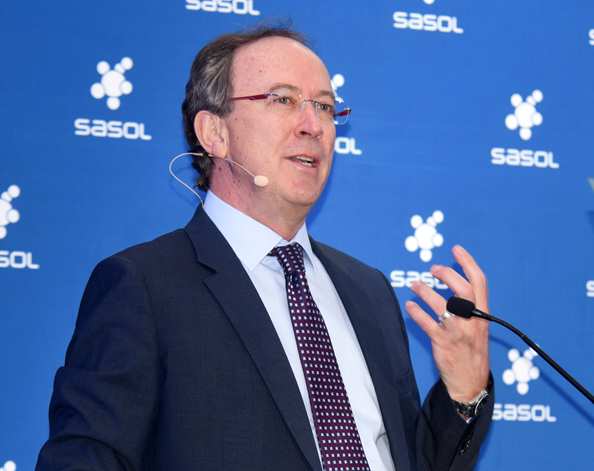
Sasol believes hydrogen mobility is a real opportunity for the country to decarbonise the sectors of long-haul and heavy-duty transport, mining and other sectors.
Fleetwood Grobler, CEO of Sasol and Andrew Kirby, CEO of Toyota South Africa, detailed plans of a joint venture between the two to develop a green hydrogen mobility corridor, using one of South Africa’s main freight corridors, the N3 route between Durban and Johannesburg, for hydrogen powered heavy-duty long-haul trucks.
The idea is to apply Sasol’s grey hydrogen skills in the establishment of a green hydrogen economy for South Africa, together with Toyota’s capabilities around the production of zero-emission hydrogen fuel cell (FC) vehicles.
“Sasol wants to provide a sustainable mobility solution for hydrogen and electric vehicles to have a refuelling and charging infrastructure as part of a sustainable future. Sasol believes hydrogen mobility is a real opportunity for the country to decarbonise the sectors of long-haul and heavy-duty transport, mining and other sectors,” said Grobler.
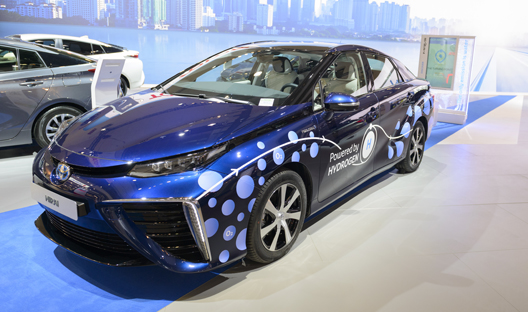
“To initiate the project, we have commenced the sourcing of fuel cell electric trucks. In addition, we are evaluating the installation of a hydrogen refuelling station for the demonstration project.”
Kirby explained that electric vehicles (EVs) and hydrogen FC vehicles should be able to co-exist in a mutually beneficial way: “As the load of a vehicle increases, and the range of the vehicle increases, fuel cells start to become a lot more interesting, and battery electric vehicles become a lot more costly. So purely from a cost of ownership point of view, there is a tipping point. There is certainly an advantageous area for fuel cells when we look at various modes of transport.”
He detailed a number of other potential advantages: “Hydrogen is as safe as petrol and diesel, and it's extremely reliable – there are fewer moving parts than internal combustion engines. Hydrogen is denser than, for example, lithium batteries or liquid natural gas, there are significant range advantages, and refuelling time is quick. Hydrogen is obviously also significantly lighter than other fuels.”
Industrial-scale development of hydrogen energy in South Africa of course faces many of the challenges highlighted by De Sisternes above.
Grobler said that in order to accelerate the potential for green hydrogen, several key enablers need to work together. To grow the hydrogen economy, “South Africa needs a nationally coordinated hydrogen strategy with action plans and clear targets, leveraging its global trading partnerships to underpin potential offtake opportunities,” he argued. “We believe hydrogen can be incorporated into an energy council to further progress dialogue, government engagement and collaboration. The country also requires regulatory frameworks and coordinated project approvals to activate the market and assist early projects.”
“Standards and policies along the value chain that ensure safety and give certainty to stakeholders and investors are also required. Local and international partnerships can maximise value creation along the hydrogen value chain.”
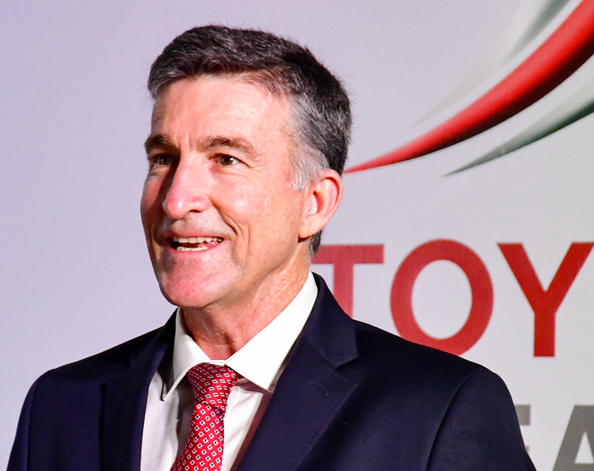
As the load of a vehicle increases, and the range of the vehicle increases, fuel cells start to become a lot more interesting, and battery electric vehicles become a lot more costly.
Costs are an issue, but these are coming down rapidly. Said De Sisternes: “The good news is that electrolysers and fuel cell solutions are cheaper today, with costs that have been declining strongly over the last 10 years. They are more efficient, and they have longer commercial lifetimes.”
“We have also seen a very rapid decline in renewable energy costs, increasing the potential for green hydrogen to be cost competitive with fossil fuel sources in certain geographies and applications, and to decarbonise those hard to abate sectors.”
Kirby said the current hydrogen price in South Africa is around R300/kg. Japan meanwhile has set a target of R50.20/kg. However, there's also been a joint European Union and South African investigation that says the long-term hydrogen price could be as low as R26.50/kg.
“If that was achievable, then a fuel cell vehicle could also achieve 23c/km. This becomes quite interesting when you then look at busses, when compared to a battery electric vehicle.”
Concluded Patel: “The hydrogen economy could provide us with a just transition, with the potential to decarbonise various industry value chains, and provide security of energy supply. It can also contribute towards the achievement of the UN’s Sustainable Development Goals.”
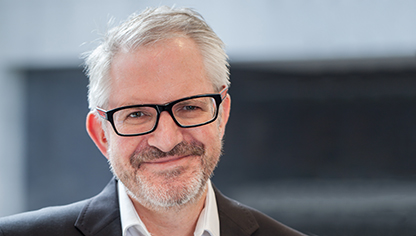
Editor
Patrick writes and edits content for Investec Wealth & Investment, and Corporate and Institutional Banking, including editing the Daily View, Monthly View, and One Magazine - an online publication for Investec's Wealth clients. Patrick was a financial journalist for many years for publications such as Financial Mail, Finweek, and Business Report. He holds a BA and a PDM (Bus.Admin.) both from Wits University.